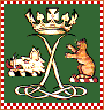Scottish History
The history of the Argyll and Sutherland Highlanders
The Regimental Museum in Stirling Castle
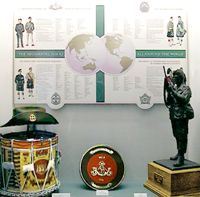
The Argyll and Sutherland Highlanders
ALLIED REGIMENTS, VOLUNTEERS and MILITIA
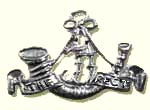
The Frontier Force Regiment
1st Battalion ( Scinde),
The Frontier Force Regiment, Pakistan Army.
This alliance stems from the close association formed in Italy in 1944 when the 1st Battalion, The Argyll and Sutherland Highlanders fought alongside the then 6th Royal Battalion (Scinde), the Frontier Force Rifles.

Headquarters: Abottabad, North West Frontier Province.
Facings: Red.
Motto: 'Ready Aye Ready'.
Regimental March: 'A Hundred Pipers'.
1843: Raised as the Scinde Camel Corp.
1851: 6th Punjab Infantry, The Scinde Rifle Corp, Punjab Irregular Force.
1865: The Scinde Rifle Corp, Punjab Frontier Force.
1903: 59th Scinde Rifles, Frontier Force.
1921: Royal Scinde Rifles, Frontier Force.
1922: 6th Royal Battalion (Scinde), 13th Frontier Force Rifles to Pakistan on Partition.
1947: 6th Battalion Frontier Force Rifles (Scinde).
1956: 1st Battalion (Scinde) The Frontier Force Regiment.
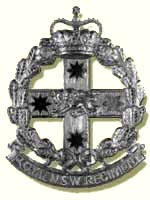
The Royal New South Wales Regiment
The Regimental Alliance with the Royal New South Wales Regiment dates from 1983 and owes its existence to an earlier alliance in 1938 with the 41st Infantry Battalion re-raised in 1948 as the 41st Infantry Battalion, The Byron Scottish, wearing the uniform of The Argyll and Sutherland Highlanders and now the 41st Battalion, The New South Wales Regiment, whose 'A' Company and Pipes and Drums wear the kilt of The Argyll and Sutherland Highlanders. Headquarters: Lismore, New South Wales (named after the island of that name in Argyll).

Tartan: Argyll and Sutherland ('A' Company and Pipes and Drums).
Motto: 'Primus in Terra Australi'.
Motto of 41st Bn: 'Mors Ante Pudorem'
Regimental March: 'Cock O'The North'.
1914: raised as 12th Infantry.
1915: The 12th (Byron) Infantry.
1918: Becomes the 2nd Bn. The 41st Infantry (Byron Regiment) on amalgamation with 35th Infantry Battalion (raised 1916).
1921: Joins with 16th Field Ambulance to become 41st Bn.
1929: Joins with 2nd Bn to form 2nd/41st Bn.
1933: Unlinked to form 2nd Bn and joins with 33rd to form 33rd/41st Battalion.
1937: Unlinked to form 41st Battalion
1942: 41st Bn Australian Imperial Force (AIF).
1943: Linked with 2nd Battalion (AIF)
1945: Disbanded.
1948: Re-raised as 41st Infantry Battalion, the Byron Scottish Regiment.
1960: Reduced to 'E' Coy. (The Byron Scottish Company) 1st g the Royal Queensland Regiment.
1965: Re-raised as 41st Battalion, The Royal New South Wales Regiment.
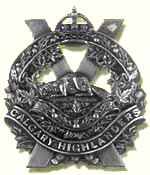
The Calgary Highlanders
The Regiment assumed a Highland identity in 1921 and was affiliated to The Argyll and Sutherland Highlanders in 1925. The 103rd (Calgary Rifles) Regiment contributed volunteers to the 10th Bn and later raised the 50th, 56th, 82nd and 137th Battalions Canadian Expeditionary Force. The Calgary Highlanders perpetuated the 10th, the 56th and 82nd Battalions. The Kings Own Calgary Regiment also counts the 103rd Regiment (Calgary Rifles) as its founding Unit and perpetuated the 50th and the 137th Battalions.
Headquarters: Calgary, Alberta. Calgary is named after Calgary on the Island of Mull, Argyllshire and Alberta for HRH Princess Louise, Duchess of Argyll, and Colonel -in-Chief of The Argyll and Sutherland Highlanders, whose second name was Alberta.

Facings: Old Gold
Tartan: Argyll and Sutherland.
Motto: 'Onward'
Regimental March: 'Highland Laddie' and 'All the Blue Bonnets are O'er the Border'
1910: Raised as the 103rd Regiment (Calgary Rifles)
1920: The Calgary Regiment
1921: 1st Bn The Calgary Highlanders.
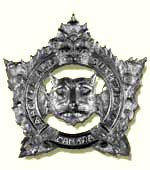
The Argyll and Sutherland Highlanders of Canada (Princess Louise's)
The Regiment was gazetted in 1903 as the 91st Regiment Canadian Highlanders. In June 1905, by Royal Warrant, it became affiliated with The Argyll and Sutherland Highlanders adopting except for the cap badge, the full Highland dress of its parent Regiment. The Regiment acted as a recruiting depot during the First World war, providing officers and men for service in the 16th, 19th, 36th, 58th, 76th, 86th, 92nd, 120th, 173rd Highlanders and the 205th numbered battalions of the Canadian Expeditionary Force. The Regiment perpetuates the 19th and the 173rd.

Headquarters: Hamilton, Ontario
Facings: Yellow
Tartan: 42nd Regiment (Black Watch) of a lighter hue and smaller sett
Motto: 'Albainn Gu Brath' (Scotland For Ever)
Regimental March: ' The Campbells are Coming'
1903; 91st Highlanders,
1904; 91st Regiment Canadian Highlanders
1929: The Argyll and Sutherland Highlanders of Canada
1920: Princess Louise's Argyll and Sutherland Highlanders of Canada
1927: The Argyll and Sutherland Highlanders of Canada (Princess Louise's)
1936: The Argyll and Sutherland Highlanders of Canada (Princess Louise's)(Machine Gun)
1941: The Argyll and Sutherland Highlanders of Canada.
Volunteers
The Volunteer Force, originally raised in 1853, was transformed into the Territorial Force in 1908. The 5th and 6th Battalions were raised in Renfrew, the 7th Battalion in Stirling and Clackmannan, the 8th Battalion in Argyll and the 9th Battalion in Dumbarton. These battalions saw service in France or the Middle East during the 1st World War. The 7th and 8th Battalions continued as Infantry Battalions throughout the 2nd World War until they were disbanded in 1967. The 5th and 6th Battalions became Machine Gun Battalions prior to the war and were subsequently converted to Anti-Tank Regiments. The 9th Battalion had meanwhile become an Anti-Aircraft Regiment but whatever their role these battalions continued to wear the Argyll and Sutherland Highlanders Cap Badge. They amalgamated in 1947 to form 402 Anti-Tank Regiment and the 9th Battalion became 554 Anti-Aircraft Regiment. Further amalgamations and changes in role occurred in 1955 and 1961, finally resulting in the formation of 277 (A&SH) Field Regiment RA. The old Territorial Battalions were disbanded in 1967 when the Highland Volunteer Battalion was formed. The 3rd 51st Highland Volunteers (Argyll and Sutherland Highlanders) with its Headquarters in Stirling and its companies spread throughout the Regimental Area came into being in 1985 and changed its title to 7th/8th (Volunteer) Battalion The Argyll and Sutherland Highlanders in 1995. In 1999 there was a further re-organisation of the territorial Army and the 7th/8th battalion was reduced to 2 companies in a new 51st Highland regiment. The 2 Companies are:
D (Argyll and Sutherland Highlanders) Company
in Dumbarton and Dunoon
and,
E (Argyll and Sutherland Highlanders) Company
in Cumbernauld and Stirling.
The display in the WW1 Room (Room 5) shows the organisation of the Volunteers in 1908, highlighting the territorial strength of the Regiment.
Militia
The 3rd and 4th Battalions were formed in 1881 from the old Militia Battalions.
The 3rd Battalion had its origins in the Fifeshire Regiment of North British Militia raised in 1797, they were subsequently named the Stirling, Dumbarton, Clackmannan and Kinross Militia in 1803 and their title was finally changed to the Highland Borderers Light Infantry in 1855 .
The 4th Battalion stems from the Royal Renfrew Militia who were embodied in 1793. A further change to the Renfrewshire Militia took place in 1803. In 1855 in recognition of their service they were granted permission to call themselves The Prince of Wales Royal Regiment of Renfrewshire Militia. Both battalions served in the Boer War and were Reserve Battalions during the 1st World War. They were subsequently disbanded.

